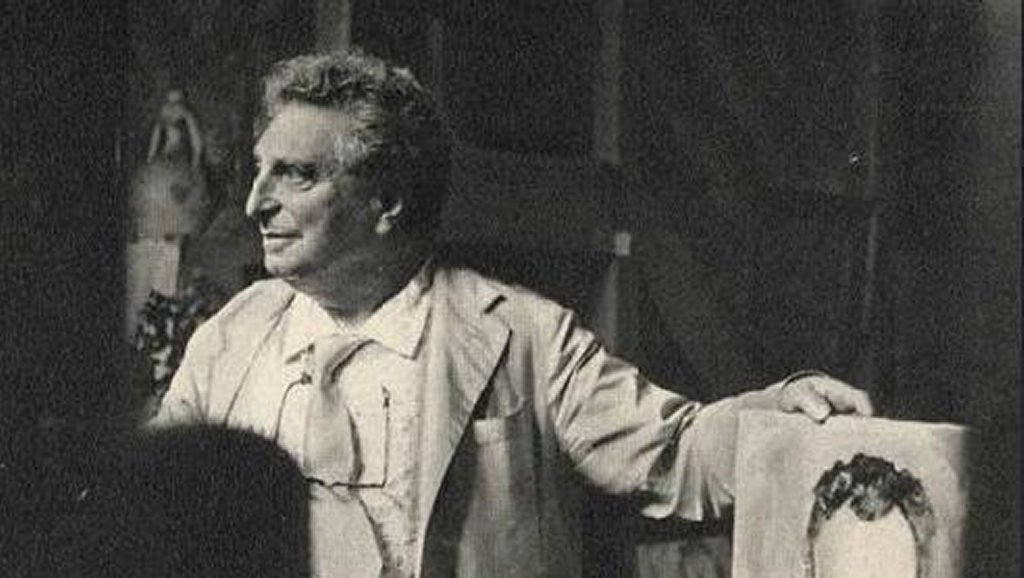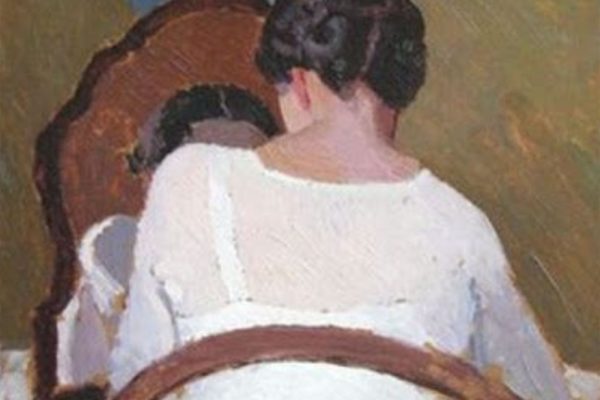What does it mean for a painter to remain a visual artist even as a writer? Carlo Levi’s Visual Poetics engages this question through a critical re-examination of one of the most influential Italian intellectuals of the twentieth century. Reading Levi’s major texts through the lens of his philosophical and critical essays, the author explores the ways in which the productive dialogue between word and image inherent in his works becomes an instrument of literary and political subversion and contributes to the development of Levi’s original humanistic cultural program.
From the Introduction
Carlo Levi’s New Humanism
La decadenza e l’astrattismo non esprimono più nulla di vivente. Le strade dell’arte sono aperte agli uomini che esistono per la prima volta e non possono non dare vita a un’arte classica e realistica. In questo senso, che è il senso della storia, della comune esperienza fraterna di infiniti uomini, parliamo di nuovo umanesimo. Decadence and abstraction no longer express a living experience. The paths of art have opened up to those who exist for the first time, those who can only generate a classical and realist art. In this sense, which is the sense of history, of the common fraternal experience of infinite people, we speak of a new humanism. — Carlo Levi, “Sul nuovo umanesimo”1
As a writer, politician, painter, and physician, Carlo Levi was one of the great figures of twentieth- century Italian intellectual life, incarnating, as Simone de Beauvoir once wrote, the humanistic ideal of the learned man, “l’uomo di cultura” (276). His ambitious program amounted to no less than the construction of a new humanism, founded upon “una riscoperta dell’uomo come unità e come rapporto” [“the rediscovery of man as unity and rapport”] (Levi, “Sul nuovo umanesimo” 80). Levi used the term umanesimo with keen awareness of its relevance in the philosophical and political debate of his time. He consciously refused, however, to attempt a definition or philosophical discussion of the meaning and theoretical value of neohumanist tendencies.
Levi’s unwillingness to give a clear definition of umanesimo is characteristic of his critical writing, which is fraught with gaps and contradictions and lacks the rigor of systematic philosophical thinking. Rather, his ideas are forged within a constant intellectual “conversation”3 with the most important figures of European cultural life. Rather than fitting into one philosophical system, Levi’s thinking can best be understood in dialogic terms— in the Bakhtinian sense of the word. In his theoretical writings, he privileges inclusion rather than systematization and exclusion, seeking to establish forms of coexistence— rather than coherence— among contradictory elements.
It is in light of these considerations that we should approach Levi’s umanesimo, as a key to understand his lifelong work as a writer, an activist, and an artist. Levi belonged to a well- established Jewish- Piedmontese family, who boasted among its members one of the founders of Italian socialism, Claudio Treves. Faithful to the family tradition of impegno, Levi himself was intensely involved in the antifascist circles of Piero Gobetti, often writing for journals like Rivoluzione liberale and, later, Carlo Rosselli’s Giustizia e Libertà.
Although he held a degree in medicine, he preferred to devote himself to painting, beginning to exhibit his work in the late 1920s with a group of fellow- Turinese artists, “I Sei di Torino.”4 As Levi wrote more than thirty years later, this small creative companionship proposed itself as an alternative to “i falsi miti novecenteschi, gli arcaismi, i populismi totalitari, le mistificazioni moderne della retorica e dell’accademia e dell’attivismo e vitalismo futurista” [“the false myths of the Novecento, the archaisms, the totalitarian populism, the modern mystifications of rhetoric and academia and of futurist activism and vitalism”] (Levi, “I Sei di Torino”).
For Levi and his friends, art was a form of active resistance to the rise of Fascism and its cultural politics.
Hence art and politics were inextricably linked, particularly for Levi, who exploited his frequent visits to Paris, justified by his painterly activity, to maintain the contacts between the Turinese cells of the antifascist movement and the Italian political exiles.
Paris was the fundamental cultural point of reference for “I Sei,” whose members looked to France and to its new artistic trends in their search for “un linguaggio pittorico di libertà” [“a pictorial language of freedom”]. When in Italy even the most important maestri boasted that they had never been to the French capital, “I Sei” aspired to a “European” and “modern” form of art, a notion that was “di per sé un’opposizione totale in tempo di Tribunali speciali, di autarchia, di romanità, di corporazioni e di ‘900” [“in and of itself a complete opposition, during the time of special tribunals, autarchy, romanità, corporations, and Novecento”].
Levi’s frequent Parisian stays before the outbreak of World War II, as well as his active engagement in leftist politics, allowed him to become acquainted with some of the most prominent artists and thinkers of his time.7 Among the Italian intellectual influences that shaped Levi’s philosophy, Piero Gobetti played a central role. Levi writes, “Scrivere di Piero Gobetti, significa, per noi della nostra generazione, fare della autobiografia; rivedere i dati e i motivi stessi della nostra formazione morale e politica” [“Writing about Piero Gobetti is, for those of us who were his contemporaries, tantamount to write autobiographically; it means to reconsider the facts and the reasons of our moral and political education”].
Despite his short life, Gobetti left indelible marks on the political consciousness of many Turinese contemporaries, from Leone Ginzburg to Natalino Sapegno and Carlo Levi. In turn, Benedetto Croce, Gaetano Salvemini, and Luigi Einaudi were fundamental to Gobetti’s own formation. Gobetti admired Croce’s resistance to the deterministic approaches of nineteenth- century positivism and his faith in the individual’s potential for creativity.
From Croce he also learned the passion for a humanistic totality of vision that Levi considers the most attractive and singular feature of Gobetti’s intellect. Gobetti read avidly and absorbed anything of value that contemporary manifestations of Italian culture could offer. His desire for a unifying cultural perspective, as well as his energy and drive, were charismatic for many budding intellectuals, who surrounded him in a free school of selfeducation characterized by a constant exchange of ideas and strong intellectual friendships.
Politically, Gobetti embraced a liberalism that encouraged creative forms of political action, involving the popular masses in active and autonomous historical agency. Never a Communist, he nonetheless admired Antonio Gramsci and his work with the factory councils in Turin, which he saw as proof of the leading role that the industrial working class must take to effect political reform. His liberalism implied a passion for freedom and autonomy in its broadest terms and was thus naturally opposed to fascism, which for Gobetti was “l’ultima e più totale espressione dell’incapacità alla libertà degli italiani” [“the ultimate and most complete expression of the Italian inability to be free”].
In this respect, he departed from Croce’s understanding of fascism as a temporary national illness and claimed instead that Mussolini’s form of totalitarianism was nothing but the “autobiography of the Italian nation,” the direct consequence of Italians’ anxieties in the face of civic passion and responsibility.
To the Italians’ fear of freedom, Levi countered “[l]a libertà, l’aspro, consapevole sforzo di autonomia, [che] costituiscono l’unità della figura di Gobetti, sia nella sua vita morale, sia nel suo pensiero, sia nella sua azione politica” [“the freedom, the harsh, conscious effort to be independent (which) constitute the unity of Gobetti’s figure, in his moral life, thought, and political action”]
Like Gobetti, Levi rejected determinism and embraced a view of man as the center and subject of history in his search for freedom (Marcovecchio 100). In this sense, Levi’s outlook is close to the idea of humanism proposed by another influential figure of European thought, Jean- Paul Sartre. Levi and Sartre met in Paris and remained friends for their entire lives.
The French philosopher consistently recognized in Levi’s work the same engagement with human existence that he proposed as the essence of existentialism as a form of humanism. According to Sartre, Levi’s curiosity for human experience emerged from a passion for life that allowed him to recognize the value of every lived experience. His multifaceted activity as a doctor, writer, and artist was motivated by the same respect for life that gave unity to his work as an intellectual and as a politician.
Sartre’s words about Levi parallel the French philosopher’s argument in defense of existentialism in The Humanism of Existentialism. Despite existentialism’s distrust of the positivistic optimism toward history and faith in progress, Sartre wrote, far from encouraging a withdrawal from social reality existentialist philosophy demanded of man a full engagement with the world, since “man is nothing else than what he makes of himself”.
Man bears full responsibility for his own destiny and for the destiny of all humanity. It is the burden of this responsibility that generates the angst that existentialism recognizes as profoundly human. Rather than freezing man into inaction, however, this existential anguish pushes him toward a full engagement with life. Discussions about humanism were an essential part of postwar European philosophical debates. Particularly important was the querelle between Sartre and Martin Heidegger.
In reaction to Sartre’s representation of existentialism as a form of humanism— and his enthusiastic appropriation of Heidegger’s thought— Heidegger published his own Letter on Humanism, in which he condemned the humanistic man- centered position as the worst crime of Western philosophy since Plato. In the letter, the German philosopher claimed that all the evils of the modern world, from capitalism to communism, derived from the humanistic “anthropologization” of Being.
Unlike Sartre, Heidegger stayed ostensibly clear of politics and political engagement. Indeed, “[t]he language of the Letter extricates thought from action” — a political statement in itself, as many readers have observed, which Heidegger conceived as a strategy to exonerate himself from his involvement with National Socialism since the early 1930s.
Although Levi remained suspicious of what he perceived as Heidegger’s dangerously irresponsible antihumanist relativism, his critical and theoretical writings resonate deeply with the philosopher’s reevaluation of poetic language and art. In this introductory chapter I propose that, through his multifarious and even paradoxical discussions of umanesimo, Levi in effect delineates a productive middle ground between Sartre’s and Heidegger’s contrasting views of humanism. Levi’s philosophy, as it emerges in his more theoretical works, is based on a reinterpretation of Giambattista Vico’s thought— which, as Ernesto Grassi writes, represents the height of Italian humanism— and is rooted in a profoundly ethical concern for the Other that anticipates, in many ways, Emmanuel Levinas’s “humanism of the Other.”
I maintain that this concern for the Other lies at the core of Levi’s intellectual project and that a careful examination of Levi’s humanism opens new perspectives on his work as a painter and a writer. Copyright Palgrave McMillan 2010









